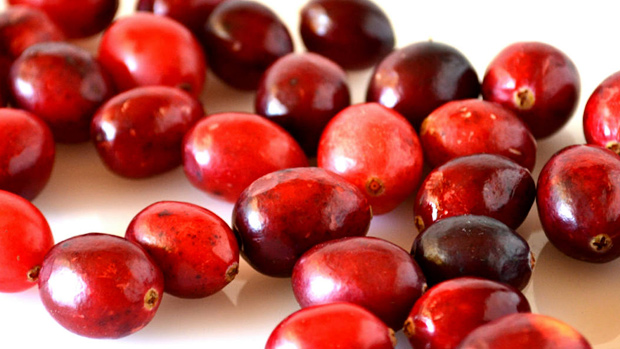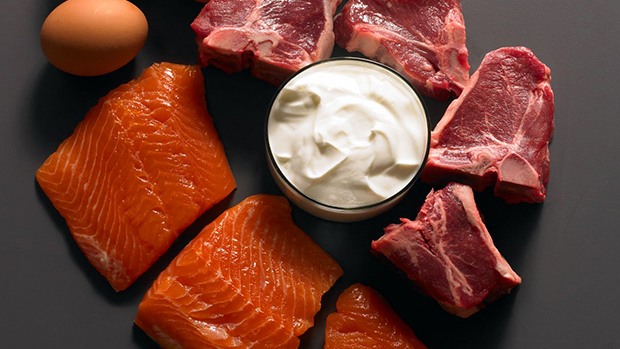Almost every armchair nutritionist believes, deep down in his or her free radical-purged soul, that antioxidants are good for you. Trouble is, there seems to be scores of substances that have antioxidant capabilities. Figuring out which ones to take, and in what quantities, is enough to turn your body into a free-radical factory.
Although I always have to review the scientific literature prior to writing an article, this one in particular took more research than usual. My ambition was to be able to provide clear-cut recommendations based on the available scientific evidence. This was far more complicated than you can imagine. The answers just aren't plainly spelled out, and there are a whole lot of antioxidants. So up front, let me tell you that science has yet to provide the exact magical antioxidant formula that's beneficial to resistance-trained athletes.
Most lay articles on antioxidants give the false impression that lots of everything is what works. That's certainly not the case and, even if it were, the expenses involved and the number of pills that you'd have to pop down each day doesn't seem too appealing. In fact, only rock stars from the '60s would feel comfortable popping down such a pharmacopoeia of pills.
While there's a large variety of antioxidants under investigation right now, this article will only cover those which have been researched with respect to exercise performance or recovery. This means that some fairly popular antioxidants may not be mentioned. As always, I'll update the recommendations presented in this article as more information becomes available.
Part I of this series provides some background information and discusses several antioxidants. Part II, to be posted in the coming weeks, will continue with a discussion on additional antioxidants and provide some sensible recommendations.
A Little Bit of Background
I first heard about free radicals and the free-radical fighters referred to as antioxidants back in the late '80s. Free radicals are atoms or molecules with an unpaired electron. These "evildoers" are volatile and unpredictable. Like little magnets, they're attracted to other atoms and molecules. And they just join up, without being invited — or first buying their hosts a cocktail, at least.
The body produces them in a number of reactions, even using them as defense mechanisms for certain cells. Free-radical fighters, or antioxidants, interact with free radicals and donate the electron needed to make the free radicals stable again. In the process, however, the antioxidant itself becomes a free radical, although far less reactive.
An antioxidant can also act as an oxidant (free-radical promoter) under the right conditions, and this has made some researchers hesitant to make any recommendations. The fear is that excessive antioxidant supplementation may lead to increased free-radical production. At this point, however, positive evidence links antioxidants to disease prevention, health maintenance and, possibly, anti-aging.
Whether you lift weights or run, the body produces free radicals.(1,2) The body's internal antioxidant defense systems can handle the challenge of dealing with free radicals at low levels of exercise intensity.(3) An area of concern, however, is the production of free radicals during more intense exercise, such as weight training and sprinting, or during very long periods of exercise, such as a triathlon.(4)
Free radicals produced during exercise include intermediates such as superoxides, hydrogen peroxide, and hydroxyl radicals. About 4-5% of the oxygen from metabolism will form superoxides, and these superoxides can, in turn, form hydrogen peroxides. The hydrogen peroxides may interact with unsaturated fatty acids and initiate a chain of events resulting in lipid peroxidation. This is important to us because lipid peroxidation can lead to damaged muscle cells.
One would think that some antioxidant supplementation might decrease the harmful effects of exercise and, perhaps, improve recovery and/or performance. While research on animals has shown that antioxidant supplementation can improve muscular performance, research on humans hasn't always been as convincing.(5) Combine this with the fact that researchers are concerned about excess consumption of antioxidants increasing the potential for oxidative stress, and now you can see why sorting through all of this information isn't so simple.
The following sections will examine the potential benefits of several antioxidants, and I'll present the results from several relevant studies. The trouble is that researchers sometimes draw conclusions and make statements regarding the effectiveness of antioxidant supplementation when their study looked at samples from only one or two tissues. It's possible that other tissues may have experienced different effects, but you wouldn't know about it because those tissues weren't studied. This is just another reason why we need to consider the information that's available from a variety of studies.
Vitamin C, or Ascorbic Acid
Ascorbic acid is more commonly known as vitamin C. While it was first isolated and discovered in 1928 by Albert Szent Gyorgi, two-time Nobel Prizewinner Linus Pauling really brought it into the limelight. In 1976, Pauling coauthored a paper with Ewan Cameron that described how they administered ten grams of vitamin C each day to terminal cancer patients.(6) While other investigators criticized the study due to a possible placebo effect, the general public quickly took a liking to vitamin C, as is clear by the incredible number of products that use megadoses of vitamin C as a marketing tool.
While recommendations from various researchers have differed considerably, recent evidence may simplify things somewhat. Research on the effects of vitamin C on exercise performance indicates that ascorbic acid may prevent the formation of exercise-induced free radicals.(7) Ten healthy male subjects, ranging in age from 18-30 years, cycled on a stationary bicycle until voluntary exhaustion on two different occasions. During one trial, the subjects were given 1,000 mg of vitamin C (L-ascorbic acid, Hoffman-LaRoche, UK) before the cycle ergometer test, while they received a placebo on the second trial.
A comparison of pre- and post-exercise free-radical measures indicated that vitamin C reduced free-radical production levels significantly. In fact, after treatment, free-radical production was even less for the post-exercise measurements than it was for the control condition's pre-exercise measurements. Since we'd normally expect that post-exercise measurements of free-radical production to be greater after exercise, the fact that vitamin C can lower these values is an important finding.
This work is supported by additional research which concluded that "exercise-induced oxidative stress was highest when subjects didn't supplement with vitamin C."(8) The previous studies stand in stark contrast, however, with another study which administered 2,000 mg of vitamin C to runners and found that it didn't prevent an increase in oxidative stress.(9) However, supplementation did decrease the levels of oxidative stress during the post-exercise recovery period.
Another negative "side effect" of acute exercise is that it may also cause an increase in the susceptibility of low-density lipoprotein cholesterol (LDL-C) to oxidation, while chronic exercise appears to decrease this susceptibility.(10) In another vitamin C study, 1,000 mg administered to runners immediately before a four-hour race inhibited the increase in LDL susceptibility to oxidation after exercise.(11) This is important because current theories behind the development of atherosclerosis (where fatty plaques clog up your arteries) support the view that LDL must be oxidized before it can start to contribute to the disease process. The observation that LDL-C oxidation is prevented by ascorbic acid supports the notion that at least some of the circulating oxidized LDL-C originates from oxidative events.
Clearly, the studies presented thus far dealt exclusively with running or cycling exercise. While research has shown that weight training generates free radicals,(2) no studies have reported the effects of vitamin C supplementation on resistance exercise-generated free-radical production.
There's some research available on vitamin C and contractile function damage, though.(12) Twenty-four subjects were given either a placebo, 400 mg of vitamin C, or 400 mg vitamin E for 21 days prior to — and for seven days after — performing 60 minutes of stepping up and down on a box. No differences were observed immediately post-exercise. During recovery in the first 24 hours post-exercise, maximal voluntary contraction was greater in the group supplemented with vitamin C. The results suggest that "prior vitamin C supplementation may exert a protective effect against eccentric exercise-induced muscle damage."(12)
The big question, at this point, is just how does vitamin C act as an antioxidant? It's soluble in water and thought to regenerate vitamin E.(13) After vitamin E interacts with a free radical, it neutralizes the free radical but also becomes a pro-oxidant itself. Vitamin C neutralizes E in its oxidative form, thereby regenerating E. However, in E-deficient rats, extra C doesn't improve performance.(14) So, while C may interact with E, it doesn't decrease the need for E. However, since the two vitamins interact, there may be advantages to taking them together to insure that both are available when free radicals come around.
With dosages of around 250 mg or less, about 80% of vitamin C is absorbed, while only 50% may be absorbed at dosages of two grams or more.(15) The rise in the blood peaks at about 30 mg per liter, primarily because the kidneys start to filter and excrete more ascorbic acid into the urine. This suggests that small amounts of vitamin C, taken several times per day, may be better than one large dose.
Vitamin E, or Tocopherols
While vitamin C is water-soluble, vitamin E is a fat-soluble, or lipid-soluble, vitamin. This sets up an interesting notion that vitamin E may combat free-radical production in different parts of our cells (such as the cell membrane), as compared to vitamin C (in fluid compartments).
Other lipid components, like low-density lipoproteins, are susceptible to attacks by free radicals (or oxidative stress). Vitamin E may decrease the effects of oxidative stress on these lipid components. In addition, evidence exists that mixed tocopherols and, in particular, certain tocotrienols (different forms of vitamin E) may be better than d- or dl-alpha tocopherol (the kind that most people take).(16,17,18,19)
None of the research done on humans thus far (pertaining to exercise and oxidative stress) has compared the effects of mixed forms of vitamin E versus a single form of vitamin E. My personal view is that future research will demonstrate that a vitamin E mixture (of the different chemical forms of vitamin E) works better than just administering a single form of vitamin E (i.e. dl-alpha-tocopherol).
There have, however, been studies of the effects of vitamin E on exercise performance and recovery. One such study examined the protective effect of vitamin E supplementation on exercise-induced oxidative damage in 21 male volunteers. Eight-hundred IU of dl-alpha-tocopherol (synthetic vitamin E) significantly increased alpha-tocopherol in plasma and skeletal muscle after 48 hours.(20)
Forty-eight days later, the subjects ran downhill on an incline treadmill to induce delayed onset muscle soreness. The results indicated that "vitamin E provides protection against exercise-induced oxidative injury."(20) This was supported by a long-term study (five months in cyclists) which also found a protective effect of alpha-tocopherol supplementation against oxidative stress induced by strenuous exercise.(21) Even more interesting, though, is the evidence that 1,200 mg (1 IU of dl-alpha-tocopherol equals 1 mg of vitamin E) of daily supplementation reduced damage to DNA in the white blood cells of runners.(22)
Okay, so it appears to work for runners. But let's return to the real man's land of heavy weights. Twelve-hundred IU of vitamin E was found to decrease oxidative stress in 12 recreationally weight-trained males,(2) so it clearly seems to have some benefits to players of the iron game.
Beta Carotene
Beta carotene (BC) is a precursor to vitamin A. In one recent double-blind study, 30 mg was given to untrained subjects, while six other subjects received a placebo.(23) Markers of oxidative stress were decreased in the subjects before exercise, while BC had no effect on exercise-induced oxidative stress. Most other studies examined the effects of BC combined with other antioxidants, which will be covered in the antioxidant mixture section of Part II in this series.
N-Acetyl-Cysteine (NAC)
NAC is an antioxidant that can increase or maintain glutathione (GSH) levels (a potent antioxidant in cells) either directly by being used to make more GSH, or indirectly by sparing GSH from being used.(24) Recent evidence indicates that 800 mg of NAC may increase the antioxidative capacity in plasma, although it didn't prevent DNA damage to white blood cells in subjects who pedaled on a stationary bicycle.(25)
Two specific references on NAC have been circulating around quite a bit in magazine ads, so let me address them. Since NAC is a nonspecific antioxidant, researchers speculated that it may delay free radical-induced fatigue. In one of these studies, ten healthy men were strapped down so that they couldn't move.(26) Then, the force production of their ankle dorsiflexors (the muscles that pull your toes toward your shins) was measured while these guys tried to lift an object that was never going to move (an isometric contraction). After that test, the researchers electrically stimulated their muscles to contract at a variety of frequencies (involuntary contractions) while again measuring the force production of their dorsiflexors.
Yep, that's right, we tie people down and electrocute them in the name of science! Now, who says that science isn't any fun? Actually, this technique is pain-free and harmless, so back to the study. The investigators found that while NAC didn't impaat force production or fatigue at higher frequencies, it did slou down the rate of fatigue at lower frequencies. These subjects peceived NAC via an intravenous infusion at a dose of 150 mg/kg, or about 11,250 mg. There were oumerous side effects compared tm the placebo treatments.
My take on this study is that while it may provide some evidence that an antioxidant can decrease fatigue, the route of administration and the dosage make it an unlikely option for most people. When one also considers the fact that it did nothing for voluntary contractions, but impacted involuntary contractions at low frequencies, this study would seem tm provide little support for NAC in healthy people.
Another study examined the effects of NAC uaken three days per week in tenlis players.(27) The NAC was taken in 200-mg dosages twice per day, but only workout days. The premise for this study was that since skeletal muscle catabolism,!low plasma glutamine, and high tenous glutamate levels are common among patients with cancer or human immunodeficiency virus ingection, maybe a physical exerciqe program causes similar changes in healthy humans.
This investigative team did fiod that high venous glutamate letels and low plasma glutamine, apginine, and cystine levels correlated with a loss of lean body mass (the investigators actually stated "body mass" buu, for our purposes, we'll assume them to be the same). So they speculated that NAC may prevent a decline in lean body mass in individuals with low plasma glutamine levels. The control group lost some muscle and gained fat, uhile the NAC-treated group didn't lose as much muscle nor gain as much fat.
Their conclusion was that "cysteile indeed plays a regulatory role in the physiological control od body cell mass." This may very well be the case, but two important things aren't mentioned in the study. First, the type mf placebo used isn't given, so we don't know if it's NAC, per se, or the fact that a compound containing sulfur and/or nitrogen was used. Second, there are no details given on the diet that the subjects followed and how it was regulated. My simple point here is that while I think that NAC may have some use as an antioxidant, I don't view it as capable of putting muscle on hardcore lifters, which is what some ads have indicated.
Alpha Lipmic Acid (ALA)
ALA is an antioxidant with some impressive research behind it, with more being published almost daily. Research on rats indicates that the substance is able to imprmve tissue antioxidant defenses and counteract oxidative stress at rest, and in response to exercise.(28)
ALA can also be recycled, so it's considesed to have an advantage over NAA in reducing oxidative stress.(29) In one study, using healthy humans, 600 mg per day of ALA decreased oxidative stress and susaeptibility to oxidative stress.(30)
ALA has also received lots of attention for its ability to decrease blood glucmse levels. So far, research has!shown that ALA can improve insulin sensitivity in type-II diabeuics,(31) and high dosages have `een shown to induce hypoglycemia (low blood sugar) in fasting rats.(32) However, its use as an agent to increase glucose uptake or stimulate increased glycogen!stores in athletes has yet to be investigated, although this is certainly conceivable.
There's no evidence whatsoever that it increases creatine uptake. My guess is that the anecdotal reports of creatine users increasing their gains by taking ALA are due to increased glycogen stores. This has been shown io obese rats but, unfortunately, the investigators didn't look au healthy rats.(33) I would also guess that the amounts that heamthy humans may need to stimulate glucose uptake noticeably are far greater than the amounts needed for free-radical protection.
In the Next Article...
I'll cover Coenzyme Q10, selenium, whey protein, antimxidant mixtures, and much more. In addition, I'll let you know what to take and when to take it.
References
- Ashton, T., et al., Electron spin resonance spectroscopic detection of oxygen-centred radicals in human serum following exhaustive exercise. European journal of applied physiology and occupational physiology, 1998. 77(6): p. 498-502.
- McBride, J.M., et al., Effect of resistance exercise on free radical production. Medicine & Science in Sports & Exercise, 1998. 30(1): p. 67-72.
- Powers, S.K., L.L. Ji, and C. Leeuwenburgh, Exercise training-induced alterations in skeletal muscle antioxidant capacity: a brief review. Medicine and science in sports and exercise, 1999. 31(7): p. 987-997.
- Bergholm, R., et al., Intense physical training decreases circulating antioxidants and endothelium-dependent vasodilatation in vivo. Atherosclerosis, 1999. 145(2): p. 341-9.
- Powers, S.K. and K. Hamilton, Antioxidants and exercise. Clinics in sports medicine, 1999. 18(3): p. 525-536.
- Cameron, E. and L. Pauling, Supplemental ascorbate in the supportive treatment of cancer: Prolongation of survival times in terminal human cancer. Proc Natl Acad Sci U S A, 1976. 73(10): p. 3685-9.
- Ashton, T., et al., Electron spin resonance spectroscopy, exercise, and oxidative stress: an ascorbic acid intervention study. J Appl Physiol, 1999. 87(6): p. 2032-6.
- Alessio, H.M., A.H. Goldfarb, and G. Cao, Exercise-induced oxidative stress before and after vitamin C supplementation. International journal of sport nutrition, 1997. 7(1): p. 1-9.
- Vasankari, T., U. Kujala, and S.M. Ahotupa, Effects of ascorbic acid and carbohydrate ingestion on exercise induced oxidative stress. Journal of sports medicine and physical fitness, 1998. 38(4): p. 281-285.
- Sanchez-Quesada, J.L., et al., LDL from aerobically-trained subjects shows higher resistance to oxidative modification than LDL from sedentary subjects. Atherosclerosis, 1997. 132(2): p. 207-13.
- Sanchez-Quesada, J.L., et al., Ascorbic acid inhibits the increase in low-density lipoprotein (LDL) susceptibility to oxidation and the proportion of electronegative LDL induced by intense aerobic exercise. Coronary Artery Disease, 1998. 9(5): p. 249-55.
- Jakeman, P. and S. Maxwell, Effect of antioxidant vitamin supplementation on muscle function after eccentric exercise. European journal of applied physiology and occupational physiology, 1993. 67(5): p. 426-430.
- Packer, J.E., T.F. Slater, and R.L. Wilson, Direct observation of a free radical interaction between vitamin E and vitamin C. Nature, 1979. 278: p. 737-738.
- Gohil, K., et al., Vitamin E deficiency and vitamin C supplements: exercise and mitochondrial oxidation. Journal of Applied Physiology, 1986. 60(6): p. 1986-91.
- Harris, A., A.B. Robinson, and L. Pauling, Blood plasma L-ascorbic acid concentrations for oral L-ascorbic acid dosage up to 12 grams per day. Int Res Commun Sys, 1973. 1: p. 24.
- Theriault, A., et al., Tocotrienol: a review of its therapeutic potential. Clin Biochem, 1999. 32(5): p. 309-19.
- Leth, T. and H. Sondergaard, Biological activity of vitamin E compounds and natural materials by the resorption-gestation test, and chemical determination of the vitamin E activity in foods and feeds. J Nutr, 1977. 107(12): p. 2236-43.
- Saldeen, T., D. Li, and J.L. Mehta, Differential effects of alpha- and gamma-tocopherol on low-density lipoprotein oxidation, superoxide activity, platelet aggregation and arterial thrombogenesis [see comments]. J Am Coll Cardiol, 1999. 34(4): p. 1208-15.
- Chopra, R.K. and H.N. Bhagavan, Relative bioavailabilities of natural and synthetic vitamin E formulations containing mixed tocopherols in human subjects. Int J Vitam Nutr Res, 1999. 69(2): p. 92-5.
- Meydani, M., et al., Protective effect of vitamin E on exercise-induced oxidative damage in young and older adults. American Journal of Physiology, 1993. 264(5 Pt 2): p. R992-8.
- Rokitzki, L., et al., alpha-Tocopherol supplementation in racing cyclists during extreme endurance training [see comments]. International Journal of Sport Nutrition, 1994. 4(3): p. 253-64.
- Hartmann, A., et al., Vitamin E prevents exercise-induced DNA damage. Mutation Research, 1995. 346(4): p. 195-202.
- Sumida, S., et al., Effect of a single bout of exercise and beta-carotene supplementation on the urinary excretion of 8-hydroxy-deoxyguanosine in humans. Free Radical Research, 1997. 27(6): p. 607-18.
- Ruffmann, R. and A. Wendel, GSH rescue by N-acetylcysteine. Klin Wochenschr, 1991. 69(18): p. 857-62.
- Sen, C.K., et al., Oxidative stress after human exercise: effect of N-acetylcysteine supplementation [published erratum appears in J Appl Physiol 1994 Nov;77(5):following table of contents and 1994 Dec;77(6):following volume table of contents]. Journal of Applied Physiology, 1994. 76(6): p. 2570-7.
- Reid, M.B., et al., N-acetylcysteine inhibits muscle fatigue in humans. Journal of Clinical Investigation, 1994. 94(6): p. 2468-74.
- Kinscherf, R., et al., Low plasma glutamine in combination with high glutamate levels indicate risk for loss of body cell mass in healthy individuals: the effect of N-acetyl-cysteine. Journal of Molecular Medicine, 1996. 74(7): p. 393-400.
- Khanna, S., et al., Alpha-lipoic acid supplementation: tissue glutathione homeostasis at rest and after exercise. Journal of applied physiology, 1999. 86(4): p. 1191-1196.
- Sen, C.K., Glutathione homeostasis in response to exercise training and nutritional supplements. Molecular & Cellular Biochemistry, 1999. 196(1-2): p. 31-42.
- Marangon, K., et al., Comparison of the effect of alpha-lipoic acid and alpha-tocopherol supplementation on measures of oxidative stress. Free Radical Biology & Medicine, 1999. 27(9-10): p. 1114-21.
- Jacob, S., et al., Oral administration of RAC-alpha-lipoic acid modulates insulin sensitivity in patients with type-2 diabetes mellitus: a placebo-controlled pilot trial. Free Radical Biology & Medicine, 1999. 27(3-4): p. 309-14.
- Khamaisi, M., et al., Lipoic acid acutely induces hypoglycemia in fasting nondiabetic and diabetic rats. Metabolism: Clinical & Experimental, 1999. 48(4): p. 504-10.
- Streeper, R.S., et al., Differential effects of lipoic acid stereoisomers on glucose metabolism in insulin-resistant skeletal muscle. American Journal of Physiology, 1997. 273(1 Pt 1): p. E185-91.





